Indian Polity: February 2024 Current Affairs | General Test Preparation for CUET UG - CUET Commerce PDF Download
APAAR: One Nation One Student ID Card
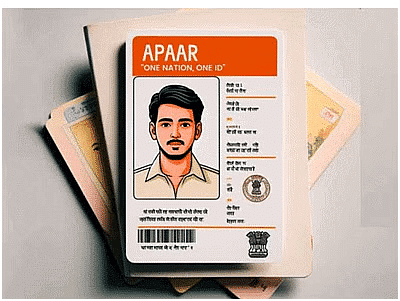
Context
At a recent national conference on 'APAAR: One Nation One Student ID Card,' the Union Education Minister revealed that approximately 25 crore Automated Permanent Academic Account Registries (APAAR) have been established. But what exactly is APAAR?
What is APAAR?
- APAAR stands for Automated Permanent Academic Account Registry, a groundbreaking initiative serving as a unique identification system for students across India, beginning from early childhood. Each student is assigned a lifelong 12-digit ID, facilitating the tracking of academic progress from pre-primary education to higher education.
Gateway to Digilocker
- APAAR also acts as a gateway to Digilocker, a secure digital repository where students can store essential documents such as exam results and report cards. This centralized storage ensures easy access to crucial documents for future endeavors like higher education or job applications.
How does APAAR ID function?
- Unique Identification: Every individual receives a distinct APAAR ID linked to the Academic Bank Credit (ABC), which digitally records a student's earned credits throughout their academic journey.
- Seamless Data Transfer: When students change schools, whether within the state or to another state, their data in the ABC is seamlessly transferred to the new school by sharing the APAAR ID, thereby eliminating the need for physical document submission.
Rationale behind APAAR
- Streamlined Education: The introduction of APAAR aims to streamline education processes, reducing the burden on students to carry physical documents.
- NEP 2020 Initiative: This initiative is part of the National Education Policy 2020 by the Ministry of Education, aiming to modernize and enhance the education system.
- Empowering State Governments: APAAR enables state governments to monitor literacy rates, dropout rates, and educational improvements effectively.
- Combatting Fraud: By providing a single, reliable reference for educational institutions, APAAR helps combat fraud and the proliferation of duplicate educational certificates.
How to get an APAAR ID?
- Registration Process: Students can enroll for APAAR by providing basic details such as name, age, date of birth, gender, and a photograph, all of which are verified using their Aadhar number.
- Aadhar Authentication: The Aadhar number is solely used for verification purposes, with no sharing of data during registration.
- Parental Consent for Minors: For minors, parental consent is mandatory for using the student’s Aadhar number for authentication.
- Voluntary Registration: Registration for creating an APAAR ID is voluntary, not mandatory.
Concerns surrounding APAAR
- Data Security Concerns: Some parents and students express concerns about sharing Aadhar details, fearing potential leaks of personal information.
- Government Assurance: The government assures that shared information will remain confidential and will only be disclosed to entities engaged in educational activities.
- Data Control: Students retain the option to cease sharing their information at any time, with a halt in data processing.
Smart Gram Panchayat
Context
On February 15, 2024, the Union Minister of Rural Development and Panchayati Raj inaugurated the groundbreaking ‘Smart Gram Panchayat:
- Revolution towards Digitization of Gram Panchayat’ Project at Paprour Gram Panchayat, located in the Begusarai District of Bihar. This initiative marks a significant leap towards digital empowerment in rural India.
What is the Smart Gram Panchayat Project?
- The Smart Gram Panchayat Project aims to extend the Prime Minister’s Wi-Fi Access Network Interface (PM-WANI) Service to Gram Panchayats in Begusarai, ushering in a new era of connectivity in rural areas.
- This initiative stands as a beacon of digital transformation, particularly in Bihar, where all Gram Panchayats are equipped with Wi-Fi services under the PM-WANI Scheme.
Project Scope and Funding
- Funded under the revamped Rashtriya Gram Swaraj Abhiyan (RGSA), the Smart Gram Panchayat Project targets 455 Gram Panchayats across 37 Blocks in Begusarai and Rohtas Districts of Bihar.
- The Ministry of Panchayati Raj is responsible for its implementation. The emphasis is on leveraging technology to enhance access to online services in crucial sectors like health, education, and skill development, thereby improving the overall quality of life in rural areas.
Key Beneficiaries
- The initiative aims to benefit various segments of the rural populace, including students, farmers, artisans, and Women Self-Help Groups (SHGs).
- By providing access to digital services, the project endeavors to empower these communities and facilitate their participation in the digital economy.
Sustainability Measures
- To ensure the long-term impact of the project, robust mechanisms for Operation & Maintenance (O&M) will be instituted.
- This approach is crucial for sustaining connectivity and maximizing the benefits of digital empowerment in rural areas.
Objectives of Rashtriya Gram Swaraj Abhiyan (RGSA)
- The RGSA, launched in 2018, underwent revamping to focus on capacity building of elected representatives (ERs) of Panchayati Raj Institutions (PRIs). The primary goal of the revamped RGSA is to enhance the governance capabilities of Panchayats, aligning them with Sustainable Development Goals (SDGs).
- The scheme emphasizes basic orientation and refresher training for ERs, aiming to strengthen Panchayat-SHG convergence and promote e-Governance.
What is PM-WANI?
- PM-WANI, initiated by the Department of Telecom (DoT) in December 2020, promotes the establishment of public WiFi hotspots to facilitate nationwide digital connectivity.
- It allows any entity to set up hotspots, in line with the National Digital Communications Policy, 2018 (NDCP), which seeks to bolster digital infrastructure in rural areas.
PM-WANI Ecosystem
- The PM-WANI ecosystem comprises Public Data Offices (PDOs), Public Data Office Aggregators (PDOAs), App Providers, and a Central Registry.
- These entities work collaboratively to ensure the seamless provision of WiFi services and facilitate user access to digital content.
Benefits of PM-WANI
- PM-WANI is poised to enhance broadband availability and affordability in rural areas, promoting entrepreneurship and digital inclusion.
- It complements existing initiatives like BharatNet and offers a cost-effective alternative to mobile technologies, such as 5G.
MGNREGA Unemployment Benefits Disbursement
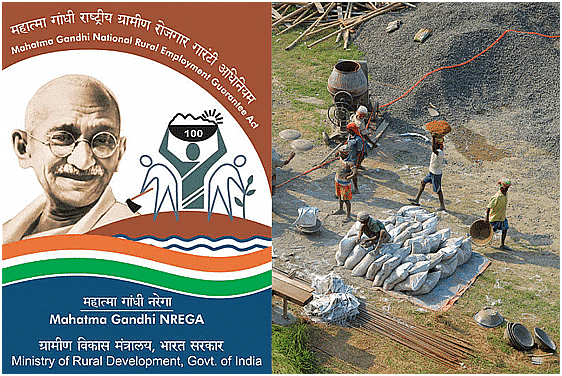
Context
The Mahatma Gandhi National Rural Employment Guarantee Act (MGNREGA) stands as a pivotal social safety net for India's rural populace. This article explores the program's significance, its role in unemployment assistance, the transition to digital payments, existing gaps, and technological advancements enhancing benefits delivery.
MGNREGA's Vital Role as Rural Unemployment Assistance
- Enacted in 2005, MGNREGA serves as primary unemployment assistance for over 60 million active workers without non-farm jobs. It ensures income security equivalent to state minimum wage rates for unskilled manual labor across various public works projects such as water conservation, road construction, and afforestation.
- Additionally, it prioritizes serving marginalized communities like scheduled castes/tribes, women, and disabled persons. In the fiscal year 2022-2023, MGNREGA provided employment in over 650,000 villages, totaling 1.84 billion workdays.
Direct Benefit Transfers Improving Efficiency
- Traditionally, MGNREGA payments faced delays and leakages. However, efforts to link wages to individual bank accounts, portable basic savings accounts, and Aadhaar national biometric IDs have streamlined disbursal. Digital payments integration has reduced delays, lowered leakage, promoted financial inclusion, and enabled faster grievance redressal.
- Ongoing efforts aim to universalize Direct Benefit Transfer (DBT) payments for NREGA workers, enhancing beneficiary experience and optimizing processes.
NREGA Wage Payments Volume and Composition

Gaps Constraining Enrollment and Timeliness
- Despite improvements, challenges persist in MGNREGA delivery. These include inadequate state-level budget allocations, low awareness leading to limited enrollment, documentation requirements excluding migrants and urban poor, and lack of worksite facilities and childcare hindering women's participation.
- FY 2022-23 witnessed only 48 person-days of average annual employment provided per household, falling short of the 100-day guarantee.
Technology Expanding Direct Benefits Delivery
- Various measures such as Unified Payment Interface (UPI) rollout, India Post Payments Bank Accounts, mobile payment options, and micropayment ecosystems aim to enhance benefits delivery.
- These initiatives facilitate easier access to MGNREGA assistance, particularly for informal workers.
Potential of India’s AVGC-XR Sector
Context
India’s Animation, Visual Effects, Gaming and Comics, and Extended Reality (AVGC-XR) sector to become a $26 billion industry by 2030.
What is the AVGC Sector?
- Animation, visual effects, gaming, and comics (AVGC) is an industry that includes animation, visual effects, gaming, and comics.
- The AVGC sector in India has the potential to become the torch-bearer of “Create in India” and “Brand India.”
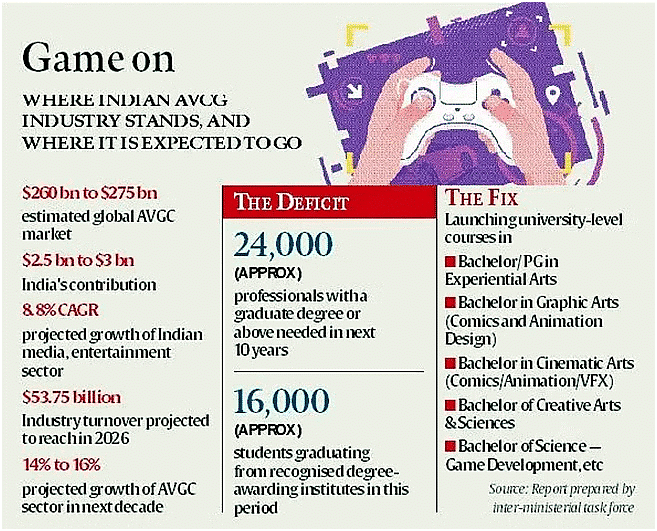
Status of the AVGC Sector in India
- The sector is growing at 30-35% annually.
- At present, India contributes about $2.5-3 billion out of the estimated $260-275 billion global AVGC market.
- It employs about 2.6 lakh professionals; expected to create over 23 lakh jobs by 2032.
- It has the potential to become a $26 billion industry (5% of the global market) by 2030.
Growth Drivers of the AVGC Sector
- Growing OTT user base: Over-the-Top user base is expected to grow at a CAGR of 7% between 2021 and 2024 with a penetration of 45.8% in internet users.
- Advent of New Technologies like Augmented Reality and Virtual Reality.
- Growth of Smartphone Users: In 2021, the number of smartphone users in the world stood at 6.3 Bn and is expected to reach 7.5 Bn by 2026 (at a CAGR of 4% between 2021 and 2026).
- Wide spectrum of applications: Global animation and VFX in advertisement is projected to grow at a CAGR of 10.9%. Gaming is growing at a CAGR of 12%, with Gamers demanding high-quality productions with engaging VFX and realistic animation.
- Growing 5G Presence: By 2026, 5G mobile subscriptions worldwide are forecast to exceed 3.5 Bn, led by Asia-Pacific, North America, and Europe. This is expected to bring a telecom revolution.
- Increased R&D Investments: E.g. EA Sports spends up to 25% of its total expenditure on R&D with the proportion of spend increasing every year.
- Surging Popularity of Comic Events, such as Comic-Con, have gained popularity across world providing fans the opportunity to interact with favourite content creators, receive sneak peeks, etc.
Challenges faced by the AVGC Sector
- Non-availability of data such as employment, industry size, education intuitions, etc. for the AVGC sector, makes decision-making tougher for entities.
- Absence of adequate training infrastructure, deterioration in the quality of training being delivered to students, impacting the quality of output and human resources for the AVGC industry.
- Skill Gap: The AVGC sector in India will require over 20 lakh skilled professionals by 2024. However, the current talent pool is only about 4 lakhs.
- Legal uncertainty: E.g. Karnataka High Court struck down substantial provisions of the Karnataka Police (Amendment) Act, 2021, which prohibited online gambling and skill-based gaming platforms.
- Lack of a dedicated fund for the sector and ambiguities in GST laws on skill-based games hinders its growth.
- There is no apex institute in India for the AVGC sector, unlike other sectors such as engineering, design, management, packaging, etc.
- No national-level policy level framework exists for the AVGC-XR Sector.
- Less focus on Research Development.
- Lack of original Indian intellectual property as most work in this sector is outsourced.
Way Forward
- Model Intellectual Property Licensing Agreements (IPLAs) may be developed by the AVGC promotion nodal agency.
- Collective licensing agreements should be promoted among the existing players to create individual intellectual property and prevent IP rights infringements.
- Indian AVGC companies should initiate conversations with Global AVGC companies to offer their servers for small Indian developers to create their own games.
- A platform for pro bono legal and technical consultation on IP protection for developers and designers, like the Patent Facilitation Program under the Department of Science & Technology may be established in coordination with the industry-led incubators and accelerators.
Nazool Land
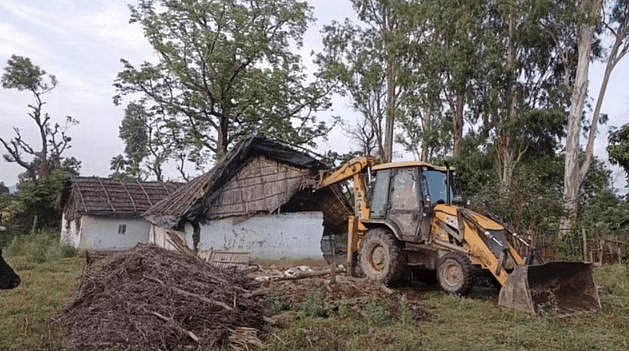
Violence erupted in Uttarakhand recently after a mosque and a madrasa standing on Nazool land were demolished.
About Nazool Land
- Nazool land is owned by the government but is most often not directly administered as state property.
- The state generally allots such land to any entity on lease for a fixed period, generally between 15 and 99 years.
- In case the lease term is expiring, one can approach the authority to renew the lease by submitting a written application to the Revenue Department of the local development authority.
- The government is free to either renew the lease or cancel it, taking back Nazool land.
- In almost all major cities in India, Nazool land has been allotted to different entities for a variety of different purposes.
How did Nazool Land emerge?
- During British rule, kings and kingdoms which opposed the British frequently revolted against them, leading to several battles between them and the British Army.
- Upon defeating these kings in battle, the British would often take their land away from them.
- After India got Independence, the British vacated these lands.
- But with kings and royals often lacking proper documentation to prove prior ownership, these lands were marked as Nazool land—to be owned by the respective state governments.
How does the government use Nazool land?
- The government generally uses Nazool land for public purposes like building schools, hospitals, Gram Panchayat buildings, etc.
- Several cities in India have also seen large tracts of land denoted as Nazool land used for housing societies, generally on lease.
How is Nazool land governed?
- While several states have brought in government orders for the purpose of framing rules for Nazool land, The Nazool Lands (Transfer) Rules, 1956, is the law mostly used for Nazool land adjudication.
Safeguarding Children in Digital Spaces

Why is it in the News?
Recent concerns have surged regarding the safety of children in digital environments, spurred by a rise in online exploitation incidents. This has led to urgent calls for action to safeguard children's rights amidst the ever-evolving digital landscape.
Challenges for Children in Digital Spaces
1. Cyberbullying
- Definition: Cyberbullying entails using digital platforms to harass, threaten, or harm others, particularly peers.
- Forms: This includes sending abusive messages, spreading rumors, sharing private or embarrassing content, and more.
- Impact: Cyberbullying can severely affect children's mental health, academic performance, and social relationships, potentially leading to serious issues like anxiety and depression.
2. Online Sexual Exploitation and Abuse:
- Definition: This involves engaging children in sexual activities or exposing them to sexual content via digital platforms for the gratification or profit of the perpetrator.
- Forms: It encompasses various actions such as producing or accessing child sexual abuse material, grooming children, soliciting them for sexual acts, etc.
- Effects: Such exploitation can have long-lasting detrimental effects on children's physical, psychological, and emotional well-being.
3. Privacy and Data Protection:
- Definition: Children have the right to control their personal information online, but this is often violated by tech companies, advertisers, hackers, or other third parties.
- Consequences: Violations can lead to harmful outcomes such as identity theft, targeted marketing, manipulation, and exposure to inappropriate content.
4. Digital Literacy and Citizenship:
- Definition: This refers to children's ability and responsibility to use digital platforms effectively, safely, and ethically.
- Challenges: Misinformation and hate speech online can hinder digital literacy, exacerbated by inequalities in access to technology.
- Consequences: Such challenges can deepen digital divides among children and undermine trust and values.
5. Metaverse and Virtual Reality (VR):
- Definition: The metaverse offers lifelike online experiences but presents risks such as virtual exploitation, harassment, discrimination, and privacy violations.
- Negative Impacts: Exposure to inappropriate content can desensitize children to violence and affect their emotional well-being.
6. Generative Artificial Intelligence (AI):
- Definition: Generative AI can create new content but also poses risks like producing misinformation and fake content.
- Vulnerabilities: Children's susceptibility to misinformation raises concerns about the impact of AI-generated content.
What Can Be Done to Ensure Children's Safety Online?
- Prevention measures against cyberbullying and online exploitation.
- Enhancing digital literacy and citizenship through education.
- Tech companies prioritizing safety in product design.
- Governments adapting regulatory frameworks to protect children online.
- Collective responsibility to extend real-world child protection rules to the digital realm.
Water (Prevention and Control of Pollution) Amendment Bill, 2024
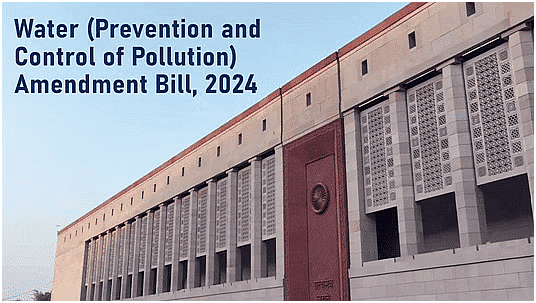
Why in the News?
The Central government has introduced the Water (Prevention and Control of Pollution) Amendment Bill, 2024 in Rajya Sabha.
Water (Prevention and Control of Pollution) Amendment Bill, 2024
- The Water (Prevention and Control of Pollution) Act was enacted in 1974 to provide for the prevention and control of water pollution. The Act prescribes various penal provisions for non-compliance or contravention of the provisions punishable with imprisonment. The Amendment Bill, tabled in the Rajya Sabha, emphasizes that the cornerstone of democratic governance lies in the government trusting its own people and institutions.
- The Bill indicates that outdated rules and regulations cause a trust deficit. For example, the Water (Prevention and Control of Pollution) Act, 1974, prescribed imprisonment of up to three months for not informing the State Board about the abstraction of water from a stream or well.
- The Bill proposes amending it to a fine between Rs10,000 and Rs15 lakh. The imprisonment provisions for minor violations, which are simple infringements not leading to any injury to humans or damage to the environment, often cause harassment to businesses and citizens. It is also not in consonance with the spirit of Ease of Living and Ease of Doing Business.
- Therefore, the Water (Prevention and Control of Pollution) Amendment Bill, 2024, proposes rationalizing criminal provisions and ensuring that citizens, businesses, and companies operate without fear of imprisonment for minor, technical, or procedural defaults.
Major Features of the Water (Prevention and Control of Pollution) Amendment Bill, 2024
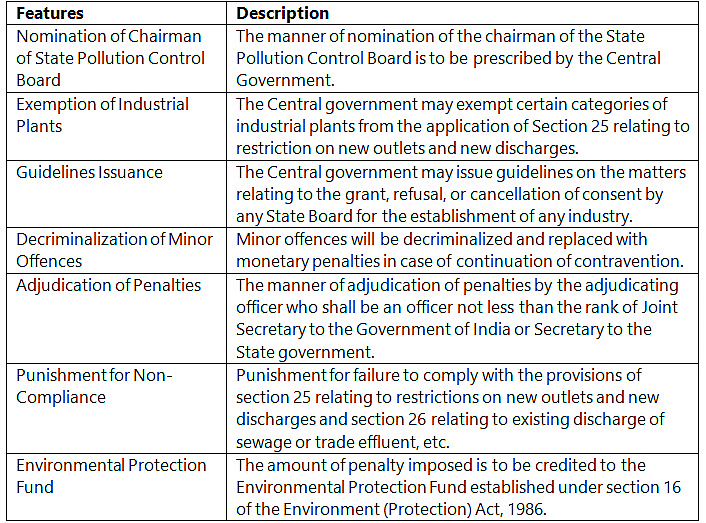 The Water (Prevention and Control of Pollution) Amendment Bill, 2024 was introduced in the Rajya Sabha by MoS for Environment Shri Ashwini Kumar Choubey. It would be applicable to Himachal Pradesh and Rajasthan, and any other state that passes a resolution under the Water (Prevention and Control of Pollution) Act, 1974. The Bill enables the Centre to “exempt certain categories of industrial plants” from the restrictions on new outlets and discharges. It also enables the Centre to “issue guidelines” on matters relating to the grant, establishment of any industry, etc.
The Water (Prevention and Control of Pollution) Amendment Bill, 2024 was introduced in the Rajya Sabha by MoS for Environment Shri Ashwini Kumar Choubey. It would be applicable to Himachal Pradesh and Rajasthan, and any other state that passes a resolution under the Water (Prevention and Control of Pollution) Act, 1974. The Bill enables the Centre to “exempt certain categories of industrial plants” from the restrictions on new outlets and discharges. It also enables the Centre to “issue guidelines” on matters relating to the grant, establishment of any industry, etc.
Performance of Information Commissions in India 2022-23
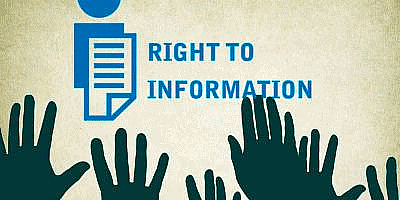
Why in News?
A recent report titled "Assessment of Information Commissions (ICs) Performance in India, 2022-23," conducted by Satark Nagrik Sangathan (SNS), has brought to light concerning statistics regarding gender representation and operational effectiveness of these commissions.
- The report is based on an analysis of data obtained through the Right to Information (RTI) Act, 2005, from 29 information commissions throughout India.
- SNS, an Indian non-governmental organization (NGO) dedicated to promoting transparency and accountability, plays a pivotal role in empowering citizens within the democratic framework.
What are the Key Highlights of the Report?
Gender Disparity in Information Commissions
- Female Representation: A mere 9% of Information Commissioners nationwide are women, indicating a pronounced gender gap.
- Leadership Positions: Only 5% of ICs have been led by women, with none currently headed by a female commissioner.
- States Lacking Female Commissioners: Approximately 41% of ICs, including those in Andhra Pradesh, Bihar, Chhattisgarh, Himachal Pradesh, Madhya Pradesh, Manipur, Meghalaya, Mizoram, Sikkim, Telangana, Uttarakhand, and West Bengal, have never had a female commissioner since their inception.
Background of Information Commissioners:
- Former Government Officials: Roughly 58% of surveyed ICs have a background in retired government service.
- Legal Professionals: About 14% of commissioners are lawyers or former judges, contributing to the diverse expertise within Information Commissions.
Functioning of Information Commissions:
- Case Disposal Rates: Several ICs exhibit a tendency to return a significant number of cases without issuing orders, with both the Central Information Commission and certain State Information Commissions rejecting 41% of appeals or complaints received.
- Low Disposal Rates: Despite facing a substantial backlog, certain commissions demonstrate low disposal rates per commissioner, indicating potential inefficiencies in case management.
- Vacancies and Appointments: The lack of timely and transparent appointments poses a significant challenge, resulting in several Commissions functioning at reduced capacity and without a chief.
- Defunct Commissions: The State Information Commissions of Jharkhand, Telangana, and Tripura are defunct due to the absence of new appointments, hindering their ability to operate effectively.
- Transparency Issues: The functioning of Information Commissions was observed to be largely opaque, with only 8 out of 29 ICs indicating that their hearings are open to public attendance, underscoring transparency concerns.
Way Forward
- Guarantee equitable, transparent, and inclusive selection procedures for commissioners, ensuring adequate representation for women and marginalized communities.
- Allocate sufficient resources and enhance infrastructure to enhance case disposal rates and efficiency, in accordance with the guidelines outlined by the RTI Act and Supreme Court.
- Facilitate timely and transparent appointments, widely publicize vacancies, and rejuvenate inactive commissions to address vacancies and ensure each IC is led by a chief commissioner.
- Strengthen transparency and accountability by releasing annual reports, divulging budget details and expenditures, and allowing public attendance at hearings.
SC Questions Amendment of Preamble
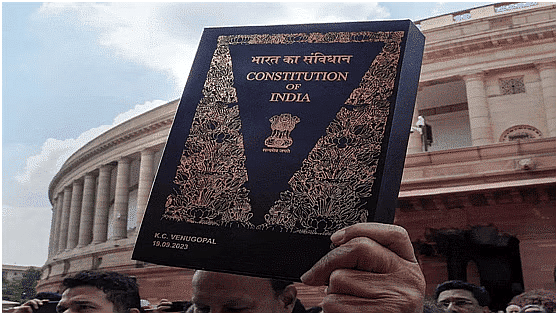
- A public interest litigation brought forth by former Rajya Sabha MP Dr. Subramanian Swamy has stirred considerable debate surrounding the proposed deletion of the words "Socialist" and "Secular" from the Preamble to the Constitution of India.
- The litigation challenges the legitimacy of the 42nd Constitution Amendment of 1976, which introduced these terms during Prime Minister Indira Gandhi’s tenure, asserting that such an amendment exceeded the amending power of the Parliament as stipulated under Article 368.
Importance of Preamble
- The Preamble to the Constitution of India, adopted on 26 November 1949 by the Constituent Assembly, serves as a foundational document delineating the fundamental purposes and principles of the Constitution.
- However, the 1976 Amendment altered the original text by incorporating the terms "Socialist" and "Secular," prompting a reassessment of its legal and constitutional implications.
Judicial Inquiry into Amending the Preamble
- During the legal proceedings, Justice Datta raised pertinent questions regarding the amendability of the Preamble, particularly contemplating whether such modifications could have been made while retaining the original adoption date of November 29, 1949.
- This inquiry underscores the necessity for a rigorous academic analysis of the feasibility of amending the Preamble without compromising its historical integrity.
Historical Context and Legal Challenge
- The insertion of "Socialist" and "Secular" into the Preamble during the 42nd Amendment, amidst the backdrop of the Emergency imposed in 1976, reflects the political agenda of the Indira Gandhi-led government.
- While proponents argue that these additions align with the broader socialist aspirations and religious diversity of India, critics contend that they deviate from the original intent of the Constitution, thereby undermining citizens' rights to determine their political beliefs.
Precedent and Constitutional Integrity
- The inquiry draws parallels with the landmark Kesavananda Bharati case of 1973, wherein the Supreme Court affirmed the integral nature of the Preamble to the Constitution, subject to amendment provided it does not violate the Constitution's basic structure.
- This underscores the delicate balance between upholding constitutional values and the scope of parliamentary authority, necessitating a judicious approach to preserve the foundational principles of the Constitution.
Understanding "Socialist" and "Secular"
The addition of "Socialist" and "Secular" reflects India's commitment to egalitarian principles and religious pluralism. While "Socialist" acknowledges the state's responsibility towards social and economic justice, "Secular" underscores the imperative of state neutrality and impartiality towards all religions, enshrined in Articles 25-28 of the Indian Constitution.
Disputes and Consensus
- While secularism was implicit in the Constitution's philosophy, the inclusion of "Secular" in the Preamble elucidates and affirms this principle.
- However, debates surrounding these terms highlight the nuances of constitutional interpretation and the divergent perspectives within the Constituent Assembly, particularly regarding the explicit incorporation of these principles into the Preamble.
Bills to Include PVTGs to ST List in Odisha and AP
Why in News?
Recently, Parliament passed two bills that aim to modify the lists of Scheduled Castes (SC) and Scheduled Tribes (ST) in Andhra Pradesh and Odisha. The bills were passed by voice vote in the Lok Sabha.
- The bills seek to include certain tribes to Particularly Vulnerable Tribal Groups (PVTGs) and certain communities of the SC list to ST list, based on the recommendations of the state governments, after consultation with the Registrar General of India and the National Commissions for Scheduled Castes & Scheduled Tribes.
What are the Bills and What do they Propose?
- Andhra Pradesh: The Constitution (Scheduled Tribes) Order (Amendment) Bill, 2024 seeks to amend the Constitution (Scheduled Tribes) Order, 1950, in relation to Andhra Pradesh.
- The Order lists the tribes deemed to be Scheduled Tribes in states and union territories.
- The Bill adds the following Particularly Vulnerable Tribal Groups (PVTGs) to the list of STs in Andhra Pradesh: (i) Bondo Porja, (ii) Khond Porja, and (iii) Konda Savaras.
- Odisha: The Constitution (Scheduled Castes and Scheduled Tribes) Orders (Amendment) Bill, 2024 amends the Constitution (Scheduled Castes) Order, 1950 and the Constitution (Scheduled Tribes) Order, 1950 to modify the list of SCs and STs in Odisha.
- PVTGs added to the Scheduled Tribes list in Odisha:
- Pauri Bhuyan and Paudi Bhuyan (included as synonyms of Bhuyan Tribe).
- Chuktia Bhunjia (recognized as Bhunjia tribe).
- Bondo community (sub-tribe of Bondo Poraja).
- Mankidia community (synonym of Mankirdia tribe).
- Odisha's ST list expanded with two new entries: Muka Dora (also Mooka Dora, Nuka Dora and Nooka Dora) and Konda Reddy (also Konda Reddi) tribes.
- The Bill removes Tamadia and Tamudia communities from the list of SCs in Odisha and adds them to the list of STs.
What is the Importance of these Bills?
- The amendment addresses discrepancies in the treatment of certain tribes across different regions.
- Communities like Konda Reddy and Muka Dora were recognized as ST in Andhra Pradesh but faced discrimination in Odisha.
- The inclusion of these groups in the ST list rectifies long-standing disparities, ensuring equitable access to government provisions and services.
- PVTGS listed as STs gain access to reservation quotas in education, employment, and political representation.
- ST status ensures affirmative action in educational institutions, allowing PVTG students to compete on a level playing field.
|
164 videos|800 docs|1156 tests
|
















